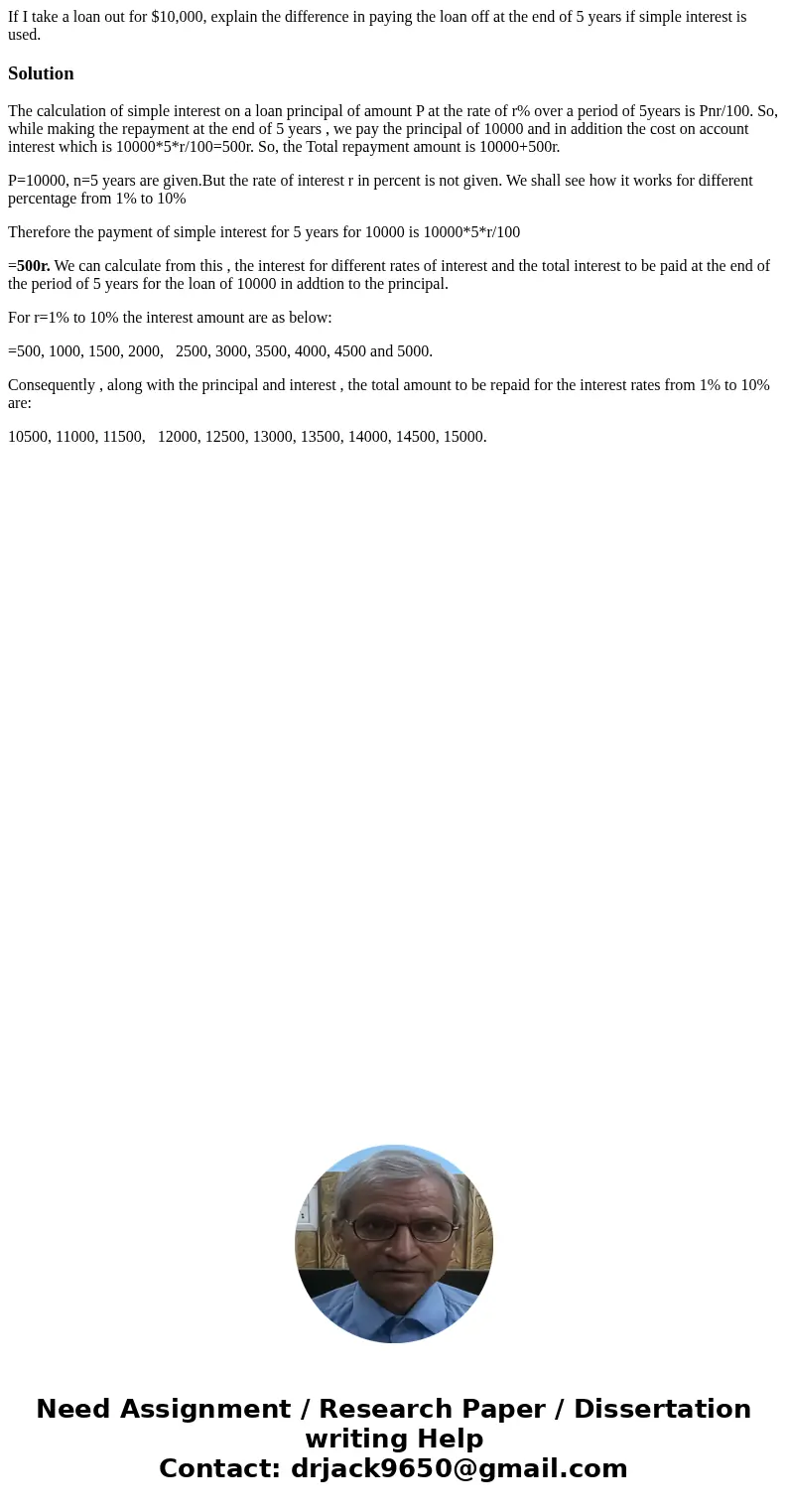If I take a loan out for 10000 explain the difference in pay
If I take a loan out for $10,000, explain the difference in paying the loan off at the end of 5 years if simple interest is used.
Solution
The calculation of simple interest on a loan principal of amount P at the rate of r% over a period of 5years is Pnr/100. So, while making the repayment at the end of 5 years , we pay the principal of 10000 and in addition the cost on account interest which is 10000*5*r/100=500r. So, the Total repayment amount is 10000+500r.
P=10000, n=5 years are given.But the rate of interest r in percent is not given. We shall see how it works for different percentage from 1% to 10%
Therefore the payment of simple interest for 5 years for 10000 is 10000*5*r/100
=500r. We can calculate from this , the interest for different rates of interest and the total interest to be paid at the end of the period of 5 years for the loan of 10000 in addtion to the principal.
For r=1% to 10% the interest amount are as below:
=500, 1000, 1500, 2000, 2500, 3000, 3500, 4000, 4500 and 5000.
Consequently , along with the principal and interest , the total amount to be repaid for the interest rates from 1% to 10% are:
10500, 11000, 11500, 12000, 12500, 13000, 13500, 14000, 14500, 15000.

 Homework Sourse
Homework Sourse